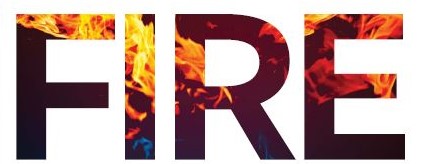
This article originally appeared in the May/June 2018 issue of Museum magazine.
Museum crises come in all shapes and sizes. There are your standard natural disasters: earthquakes, wildfires, and hurricanes. And then there are the crises not related to Mother Nature, ranging from financial to personnel to provenance to major (and majorly expensive) exhibitions, years in the making, that are suddenly on the wrong side of a hashtag revolution.
In the midst of a crisis, implementing a well-considered communications plan that addresses the challenge, rallies support and conveys accurate, accountable, and useful information to stakeholders is crucial to successfully weathering the experience.
The following tips will help guide your communications strategy before, during, and after a crisis. Some are common sense, and some may be a little scary. But they are all meant to help you safely, and sanely, navigate rough waters.
But let’s be clear from the start: these steps will not solve your financial problem, sandbag a raging flood from your doors, quell a social media swarm attacking a well-intentioned public program, or magically resolve the myriad other predicaments museums can face.
They can, however, help your organization shape meaningful solutions that maintain or rebuild stakeholders’ confidence and faith in your essential daily work.
Before a Crisis Hits
Make a plan.
“Be prepared.” The time-honored Boy Scout motto has never rung truer than when setting the stage for effective crisis communications. And yet crafting a crisis communications plan is often neglected by time- and resource-strapped staff preoccupied with mission-critical tasks.
Nonetheless, you need to make the plan a priority (even a short one-pager is better than nothing) because tomorrow or a few years down the road every organization will face a challenge—man-made or act of nature. Fortunately (if that’s the appropriate word), many problems signal themselves early on, and those that don’t—like a Hurricane Harvey–type natural disaster—can be prepared for in general terms.
Your plans should consider issues just beginning to brew. Might signs of financial belt-tightening raise the possibility of cutbacks or maybe layoffs? Could material being considered for an upcoming exhibition raise sensitivities or create offense? Don’t think you can keep an internal problem out of the public eye. Realistically, museums are not immune to issues involving harassment, discrimination, and questionable fiscal practice. Plan as if you live in a transparent world. Because you do.
“Sometimes you have a PR problem, and sometimes you just have a problem.” As this PR adage suggests, good PR can mask a crisis or change its temperature, but it can’t make the underlying problem go away. Make sure you identify the root problem, but through the lens of a desired outcome.
In short, what would be a favorable solution for your organization at the end of the day? I often frame this discussion by asking, “If the New York Times covered this story, what headline would we want to see?” That tends to focus the discussion.
Identify stakeholders and communications vehicles.
Here are some baseline questions to help you in this area:
- Who are our stakeholder groups?
- What are their concerns?
- What will each group need to hear?
- What do we want them to do in a crisis?
Keep in mind that internal audiences—trustees, staff, members, and volunteers—will have different needs than the general public and the press. And don’t forget about funders and government officials as endorsers, advocates, or—if things go south—adversaries.
According to surveys, museums are considered the most trustworthy source of information in America, rated higher than local newspapers, the US government, or academic researchers. That means the public is rooting for you—but they expect accountability.
Your most deeply invested stakeholders will gladly help you shape the public message when a crisis hits. But they’ll want to know two things: what happened, and what are you going to do about it? You will need to quickly get them information that influences opinion in your favor.
To that end, take stock of your internal and external communications systems and platforms. Websites, email, and social media are so ubiquitous that we don’t always consider backups. A hurricane or earthquake may mean power outages. Think about creating secondary or complementary platforms, like bulletin boards, or identifying an out-of-region resource. Are your contact databases up-to-date? Are they accessible off-site? Are there protocols that specify who owns communication tools during a crisis?
Assemble a team.
Before a crisis or problem develops, create an emergency communications team. Ideally, this team would be part of a broader crisis response task force, the group responsible for addressing the fundamental challenge.
The communications team should be small— three or four individuals, with one person (preferably the organization’s chief executive), empowered to make decisions. This team (best facilitated by the organization’s head of communications) will craft and implement internal and external communication strategies. Its first task is to assign specific roles (e.g., decision-maker, spokesperson, internal communicator, external messenger) and communication protocols (e.g., group texts or emails, good old-fashioned phone trees, off-site meeting places) among team members.
Members of this team should be trained in how to communicate effectively with the press before a crisis hits. You won’t have time to do this when the mud hits the fan. Good media training includes mock interviews and tips on how to develop responses and messages framed by an institution’s mission and values.
Tips from Those Who’ve Been There
If you work at any organization long enough, you’ll hit rough waters at some point. Here are the primary takeaways from some pros who’ve navigated a crisis or two over the course of their careers.
“Crises can also bubble up in the time it takes to send a tweet. Watch social channels for early rumblings of an issue, and craft key messages to be social-friendly in tone and length.”
—Allison Peck, Director of Communications and Marketing, Hirshhorn Museum and Sculpture Garden
“Every few years I’ll organize a daylong media training seminar for our experts: we examine real-life case studies and run mock on-camera interviews, including critiques and tips from the group. It’s all in good fun…mostly. Staff learn a lot about themselves, and many have made great strides in being ready for their close-ups.”
—Jonathan Thompson, Vice President of Marketing and Public Relations, Newseum
“When the crisis hits, immediately form a core working team, continuously evaluate all perspectives, stay levelheaded while being empathetic and accountable, overcommunicate to internal stakeholders, and be thoughtful and coordinated in external communications. Remain nimble and open to possibilities. No matter what, it will be a teaching moment in hundreds of ways for your organization—and for you personally and professionally.”
—Annie Gillette Cleveland, Chief of Marketing and Strategic Communications, Walker Art Center
“The old adage of ‘in the absence of information comes speculation’ still applies as a guiding principle. To the extent possible, transparency is best; though, sometimes if information is limited (or pending), providing a short statement will avoid the dreaded ‘no comment.’ Encourage a board and/or leadership team to be as responsive as possible throughout the process.”
—Kristin Guiter, Director, SUTTON Communications
Pay attention to how other organizations and even corporations responded to their own challenges. What tone did they strike? What actions did they take, either in their communications with the press or in their direct messaging via social media? What resources did they expend? What lessons—good and bad—can you file away for future reference?
For an extra measure of preparedness, create a “bullpen” of organizations and individuals to call on for additional support if the crisis escalates. Research and identify strategic communications firms to add more muscle, and bookmark key influencers (civic and community leaders, scholars, and industry experts) you’ll want in your corner. You’ll fall way behind if you’re googling PR firms when things get heated.
Preparing these elements in advance won’t guarantee smooth sailing, but they’ll provide a solid foundation for speedier navigation.
During a Crisis
Start with an honest assessment of the scope and scale of the problem:
- Where is this problem coming from? Is it an annoyance or a serious issue? Is it a natural disaster, self-induced misstep, or an antagonistic external force?
- Is it a communications problem (will education suffice?) or is it a conflict (do you need an aggressive counterattack)?
- And, most important, separate fact from fiction and determine what precise problem you are trying to solve.
This is where your emergency communications team and broader crisis response come in. As early as possible, both teams should determine a shared goal or vision for where you want/need to be when the crisis ends (again, imagine the ideal headline). Keep this vision in mind when developing solutions to various challenges and crafting messages for stakeholders.
Deliver these messages to their target audiences in a timely manner. The immediacy of social media means there’s even more pressure to act or respond within minutes (maybe hours). Here are some tips:
- Keep messages accurate, supported by facts, and reflective of institutional values.
- Watch out for analysis paralysis. Taking too long to respond can turn a spark into a forest fire.
- Avoid a first response that’s tepid or wishy-washy, which can just drag out the news cycle.
- Find the right spokespeople for the right occasion. The CFO might be the best person to address financial topics, but not as equipped as a curator would be to talk about exhibit questions.
- When appropriate, offer a sincere apology and meaningful atonement.
- Monitor media reports and social media chatter to see if your messages are resonating. Adjust accordingly. Not everyone follows you on Twitter, so use all appropriate platforms.
Here’s where the pre-planning can really pay off. Having an emergency communications team in place that is armed with the appropriate resources can dramatically improve your chances of quickly and effectively telling your story, shoring up support, and providing feedback to internal decision makers who are toiling away on the underlying crisis.
You’ll want to preach to the converted and mobilize your members: they’re already on your side, while you may never win over the opposition, and trying could require more energy and resources than you’re prepared to expend. Share external resources, such as media reports, that bolster your story or an endorsement from a trusted third party who can offer further validation. When possible, prepare stakeholders for bad news to avoid surprises.
Responding to Sticky Issues
If your museum sits in a floodplain, on a fault line, or in a fire zone, your crisis communication plan surely has those emergency responses covered. But crises don’t always stick to the geological script.
For example, how would your organization respond to one of today’s cultural flashpoints, such as the presentation of images of Confederate generals or the work of artists accused of sexual misconduct? Is your museum equipped to inform or guide such a conversation?
When determining how best to respond, playing offense is more effective than defense in steering media coverage and public sentiment. Remember: the public believes that transparent organizations don’t run from a problem. When you commit to your convictions, you remind your stakeholders why your organization is worth supporting.
After the Crisis
When you have a resolution, shout out the “all clear” to the world. Be aggressive in communicating good news to your friends (and occasional foes) in the press. Unfortunately, sometimes a positive resolution is a harder sell to the media. But find creative ways to sell your successes, just as you would an ambitious program, performance, event, or exhibition—they don’t call it marketing and communications for nothing.
When the dust settles, you will want to find ways to reestablish (and hopefully burnish) your institution’s reputation. Don’t let pure exhaustion, raw memories, and bruised egos prevent an honest assessment of what worked and what didn’t during the crisis. Just as pre-planning can help your organization safely navigate a challenge, so can evaluating how to improve crisis management systems for the next time (and there will always be a next time). If possible, use audience research to quantify the museum’s reputation among external stakeholders.
Finally, never turn down an opportunity to remind everyone that you’re making progress and have moved beyond the challenge. Sometimes it’s hard to return to your routine outreach activities after weathering a storm, but doing so reinforces stability. After all, most audiences only remember the last headline (or tweet). So make sure it’s a good one.
Resources
Tim Hallman is director of communications and business development at the Asian Art Museum in San Francisco, California. He serves as chair of PRAM, AAM’s public relations and marketing professional network, and chair of the Art Museum Marketing Association.








